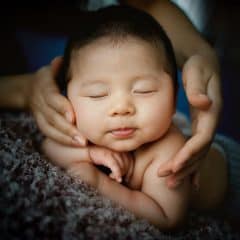Emotional Characteristics of Older Preschoolers

Image credit: karelnoppe / 123RF Stock Photo
The emotional part of the brain begins developing before the mental part, and development of emotions are completed before the parts of the brain used for mental activity. In fact, when humans encode new information, the emotion related to that experience is also encoded. As preschoolers learn about the Bible, they are learning not only what the Bible tells us but how they feel about these stories and concepts.
• Basic emotions (joy, anger, sadness, fear, disgust, surprise) and self-conscious emotions (jealousy, empathy, embarrassment, pride, shame, guilt) are fairly well developed by age 4. They typically are able to think about their emotions, though some 4s may need help in giving the correct name to the emotions they are feeling. The ability to develop and talk about strategies they can use to cope with stressful events is just beginning to develop. Help of a caring adult often is needed to walk through this process.
• Fours and 5s recognize they need to control their emotions in social settings but are not always able to do this well, especially if they are tired, excited or ill.
• Older preschoolers are beginning to recognize that different people can have different emotions than they do toward an event, although they seldom believe that perspectives other than their own are reasonable.
• While we are easily aware of the stress related to negative events for preschoolers, it is important to remember that positive events such as holidays, schedule changes or visits from grandparents may be stressful, as well.
• Tears are still a common way for older preschoolers to deal with stress. In these situations, our job is to show empathy as we help the child regain control of his or her emotions.
• Preschoolers look to the important adults in their lives to determine appropriate ways to deal with emotions. The example we set often determines the way the children we teach will react to emotional situations.
• Common fears at this age include animals, monsters, ghosts, dark rooms, etc. While the perception of danger that the child experiences may not be accurate, the feeling of fear is real. This is best managed by recognizing the child’s fear and helping him or her find ways to feel safe.
Click here to read about Social Characteristics of Older Preschoolers.



